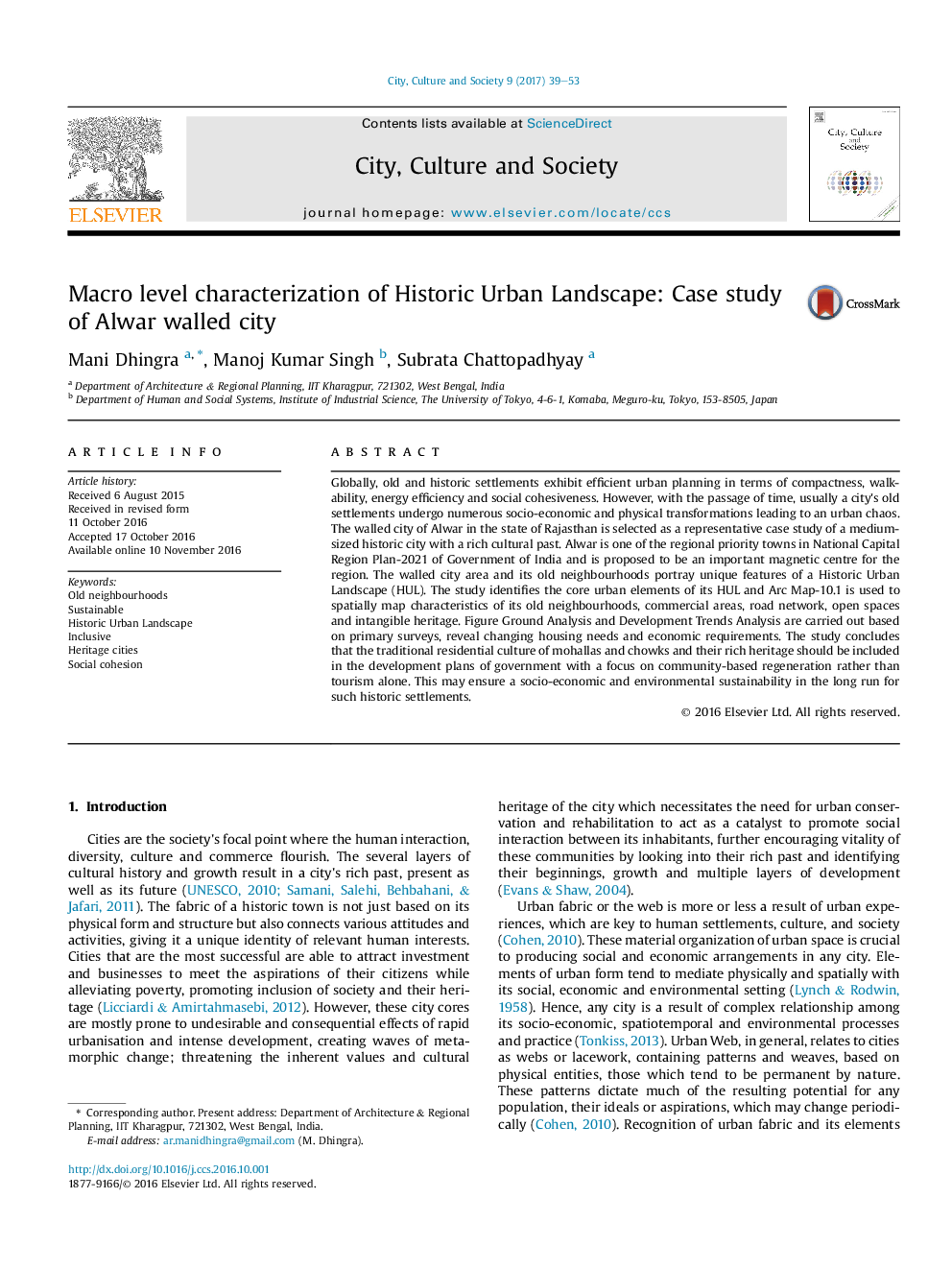| کد مقاله | کد نشریه | سال انتشار | مقاله انگلیسی | نسخه تمام متن |
|---|---|---|---|---|
| 5048204 | 1476286 | 2017 | 15 صفحه PDF | دانلود رایگان |
- Spatial mapping of core urban elements and figure ground analysis of Historic Urban Landscape in India is carried out.
- Old urban fabric is walkable, compact, socially cohesive, inclusive and environment friendly.
- Primary household surveys and local consultation are used for development trends analysis and cognitional mapping.
- Historic neighbourhoods in India needs micro-level inclusive planning framework to achieve sustainability in long run.
Globally, old and historic settlements exhibit efficient urban planning in terms of compactness, walkability, energy efficiency and social cohesiveness. However, with the passage of time, usually a city's old settlements undergo numerous socio-economic and physical transformations leading to an urban chaos. The walled city of Alwar in the state of Rajasthan is selected as a representative case study of a medium-sized historic city with a rich cultural past. Alwar is one of the regional priority towns in National Capital Region Plan-2021 of Government of India and is proposed to be an important magnetic centre for the region. The walled city area and its old neighbourhoods portray unique features of a Historic Urban Landscape (HUL). The study identifies the core urban elements of its HUL and Arc Map-10.1 is used to spatially map characteristics of its old neighbourhoods, commercial areas, road network, open spaces and intangible heritage. Figure Ground Analysis and Development Trends Analysis are carried out based on primary surveys, reveal changing housing needs and economic requirements. The study concludes that the traditional residential culture of mohallas and chowks and their rich heritage should be included in the development plans of government with a focus on community-based regeneration rather than tourism alone. This may ensure a socio-economic and environmental sustainability in the long run for such historic settlements.
Journal: City, Culture and Society - Volume 9, June 2017, Pages 39-53
